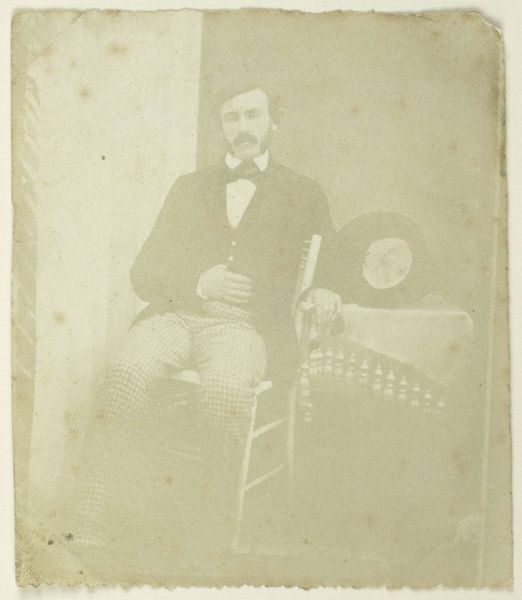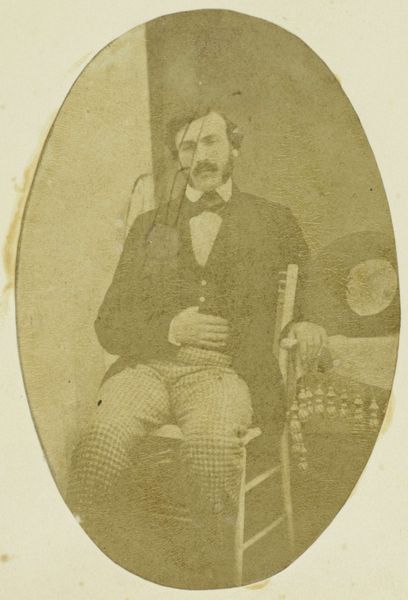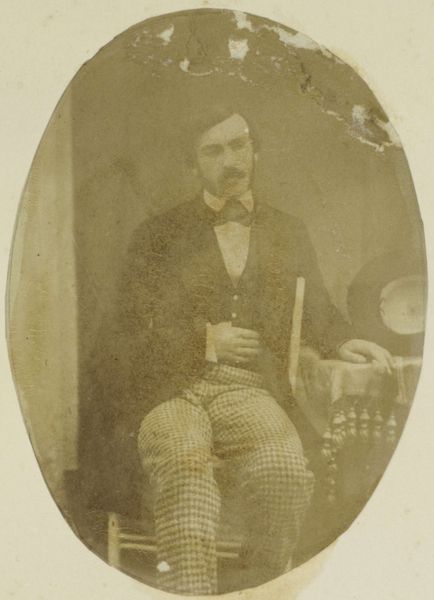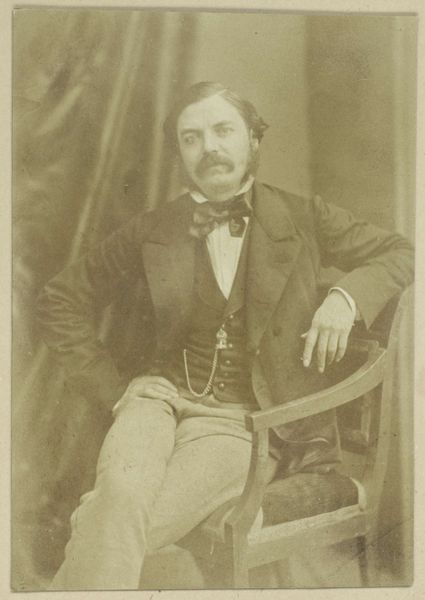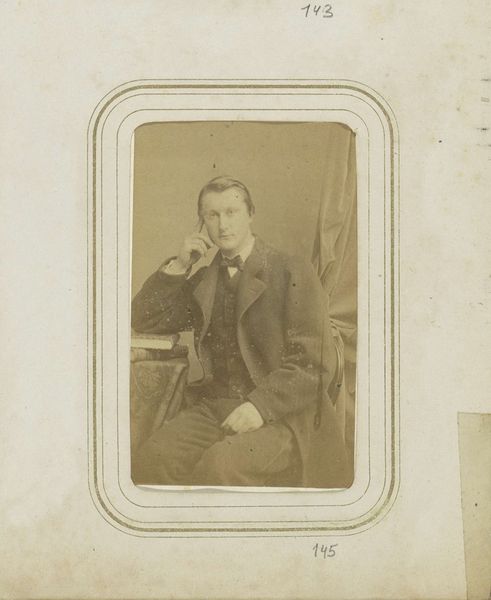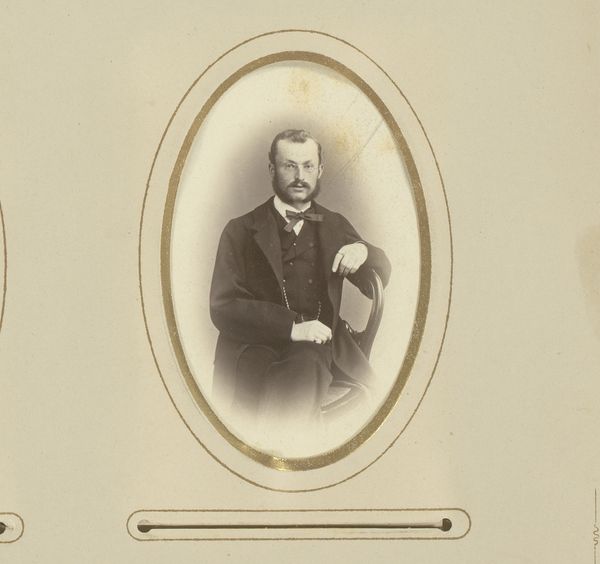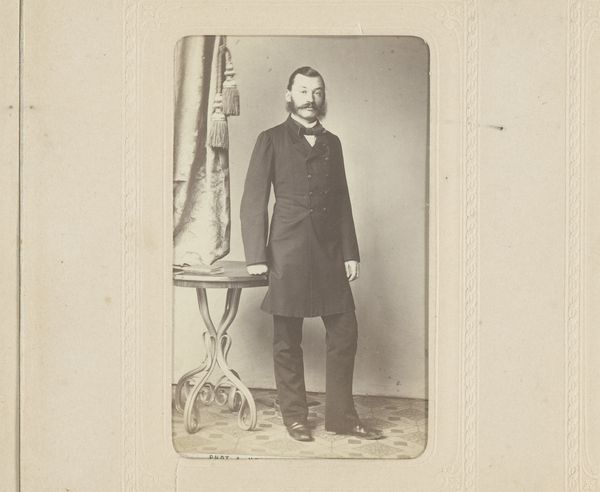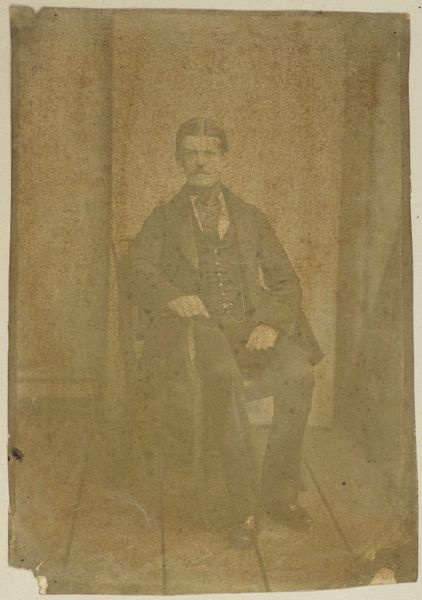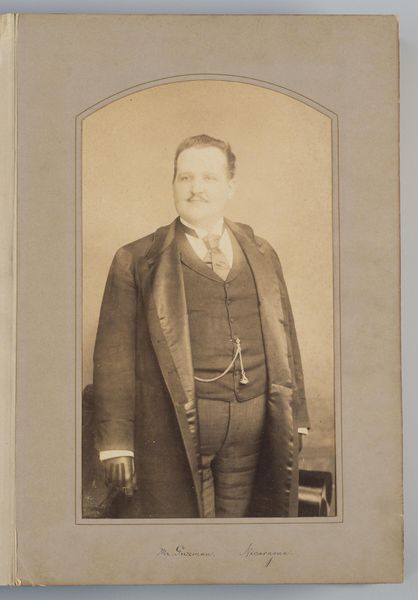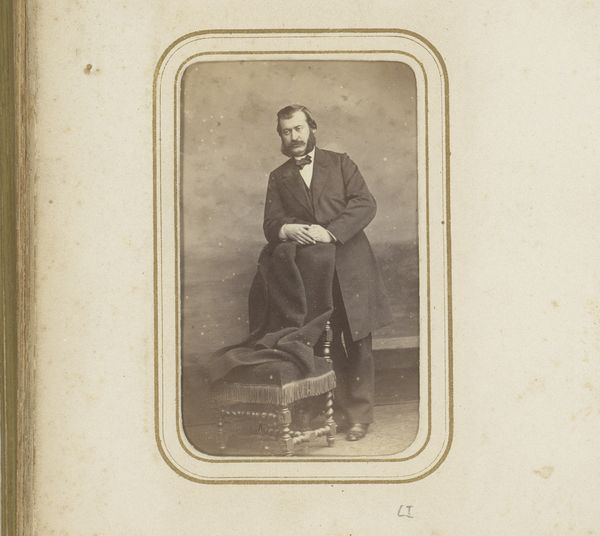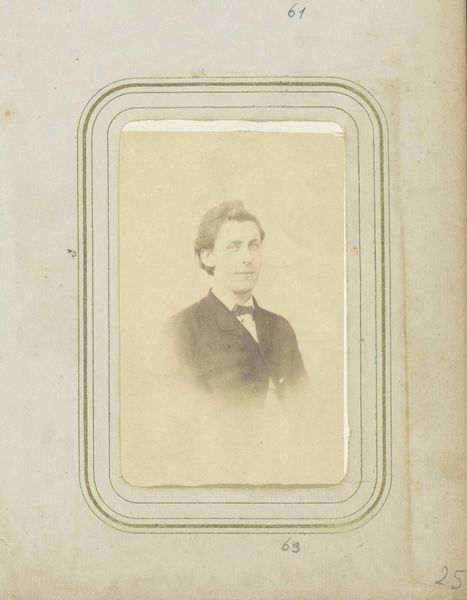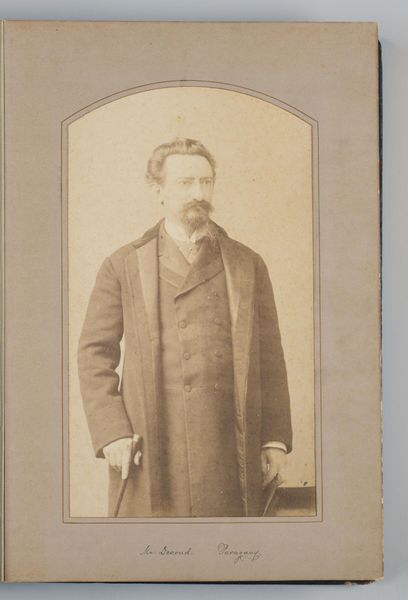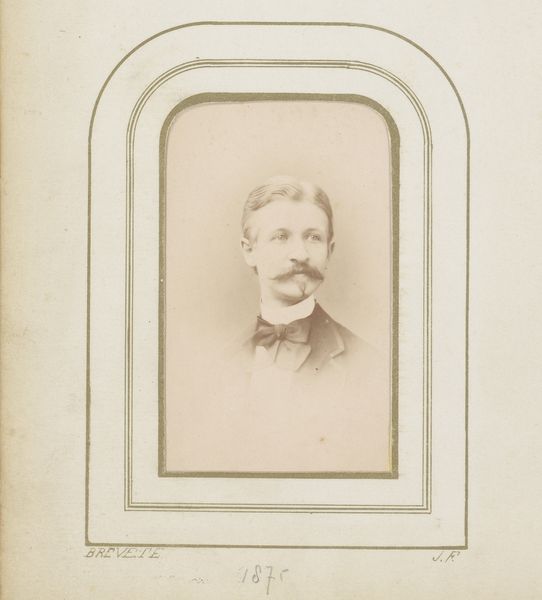
daguerreotype, photography
#
portrait
#
daguerreotype
#
photography
#
realism
Dimensions: height 110 mm, width 95 mm
Copyright: Rijks Museum: Open Domain
Editor: This is a daguerreotype, "Portrait of a Young Man" by Eduard Isaac Asser, created around 1854. The tonal range is fascinating, quite limited. The light seems almost to flatten the figure. What jumps out to you from a formal perspective? Curator: Note how the photographer carefully constructed this portrait by focusing on the geometric components within. Consider the composition: a seated figure offset by the sharp rectangular space of what could be the corner of a room. Observe also the subject’s pose: the hand placed just so over the stomach—leading the eye toward a more central position in the photographic space. Editor: So, it's almost like the diagonal line that starts from the top left of the photo is cut by his body to draw focus? Curator: Precisely. Also, examine the lines created by the chair. And the table behind the figure repeats these angles. Notice, also, the subtle tonal variations of his patterned trousers are juxtaposed against the dark jacket. It appears quite calculated. Editor: I see what you mean! There is such a deliberate, staged nature that counters the seemingly ‘realistic’ intent of the medium. Did this level of staging challenge realism, do you think? Curator: It certainly exposes photography as a constructed artifice, pushing viewers to analyse visual organisation beyond mere representational likeness. An intentional design is always at play in photography. Editor: It’s like a game of geometry. Thanks for pointing that out; I won’t look at portraits the same way again! Curator: Indeed. Examining this portrait has, I hope, clarified the subtle formalism inherent to photography, enriching our aesthetic understanding.
Comments
No comments
Be the first to comment and join the conversation on the ultimate creative platform.
